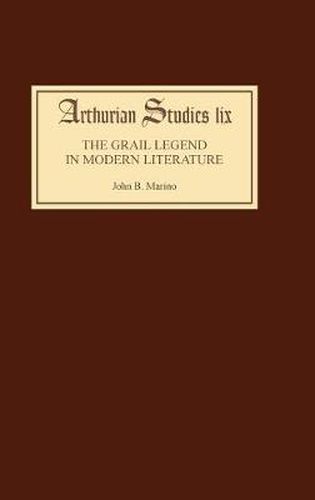Readings Newsletter
Become a Readings Member to make your shopping experience even easier.
Sign in or sign up for free!
You’re not far away from qualifying for FREE standard shipping within Australia
You’ve qualified for FREE standard shipping within Australia
The cart is loading…






This study shows how modern (including postmodern) adaptations of the Grail legend correspond to trends in the scholarly community and how the legend has been appropriated by competing world-views. There are three parallel trendsin Grail scholarship and modern adaptations of the legend: controversy over Christian or pagan origins, secularization by way of humanism, and esoteric mysticism. These three trends reflect movements in popular culture. Relativismand multiculturalism influence Christian–pagan cultural conflict in the adaptations. Mythographers maintain the legend’s appeal in a humanist culture by considering the Grail metaphor rather than material actuality; modern adaptations then transform the Grail from a particularly Christian symbol to one with universal application in an increasingly secular society. Modern esoteric spiritualities allow the Grail actuality with flexible meaning. This study,then, demonstrates how the Grail legend is transformed and adapted from medieval to modern cultures and continues to evolve today.
JOHN B. MARINO is adjunct instructor, Maryville University and Saint Louis University.
$9.00 standard shipping within Australia
FREE standard shipping within Australia for orders over $100.00
Express & International shipping calculated at checkout
This study shows how modern (including postmodern) adaptations of the Grail legend correspond to trends in the scholarly community and how the legend has been appropriated by competing world-views. There are three parallel trendsin Grail scholarship and modern adaptations of the legend: controversy over Christian or pagan origins, secularization by way of humanism, and esoteric mysticism. These three trends reflect movements in popular culture. Relativismand multiculturalism influence Christian–pagan cultural conflict in the adaptations. Mythographers maintain the legend’s appeal in a humanist culture by considering the Grail metaphor rather than material actuality; modern adaptations then transform the Grail from a particularly Christian symbol to one with universal application in an increasingly secular society. Modern esoteric spiritualities allow the Grail actuality with flexible meaning. This study,then, demonstrates how the Grail legend is transformed and adapted from medieval to modern cultures and continues to evolve today.
JOHN B. MARINO is adjunct instructor, Maryville University and Saint Louis University.